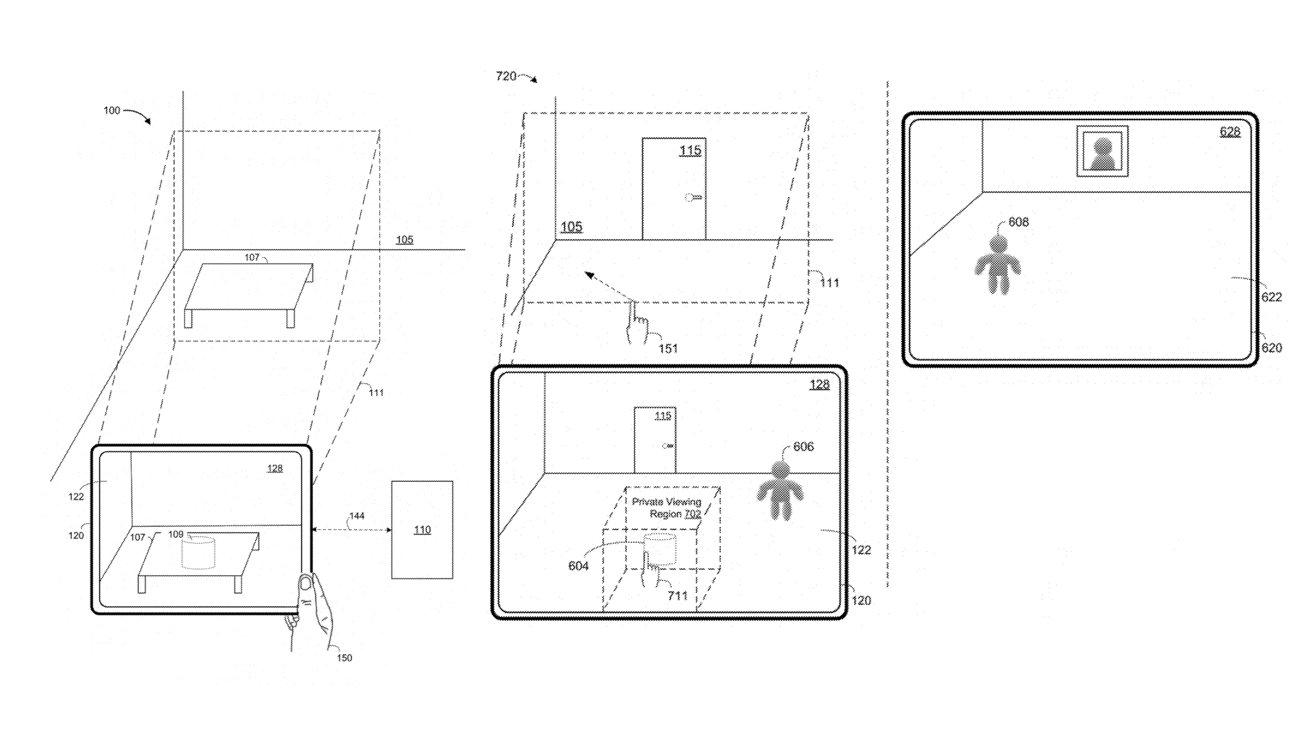Future Apple Vision Pro could limit playback based on where you are
A future Apple Vision Pro or iPad could display a virtual object or other data to a user depending on where they are, according to a patent that limits media playback to a user based on their physical location.
![Viewing information in the Apple Vision Pro [Apple]](https://photos5.appleinsider.com/gallery/58366-118922-Applevisionproinuse-xl.jpg)
Viewing information in the Apple Vision Pro [Apple]
One of the benefits of the digital era is that it's very easy to get the information you need practically anywhere you want. However, in some instances where data must be kept secret between authorized personnel, there may be a need to keep the information more closely guarded than usual.
Companies such as Apple could have a culture of secrecy that prevents ideas from being discussed or leaving a department, or even a room. While this can be accomplished with physical items relatively easily, it's much harder to contain the data when dealing with it digitally.
In a patent granted to Apple by the U.S. Patent and Trademark Office on Tuesday, the filing for "Method and Device for Spatially Designating Private Content" describes just such a system.
The basic concept is that data, be it personal or sensitive information, may not be seen by the user unless they're in a specific place. For example, you could only see data when at home, or a specific part of an office.
This is similar in concept to some audio tours of museums that detect where the visitor is standing before playing audio content, but in this case it would also revolve around visual information.
According to the patent, a user could be indicated to an area where they could view content privately. Though this could be a notification of how far and in which direction they should travel, it could also appear via a display as an augmented reality zone they could enter.

Example images from the patent.
If the user is in the private viewing region, they will be able to see the hidden data. When the person enters or leaves the region, they will trigger a state change, which allows or denies access to that data.
Movement in and out of the region can also trigger notifications, informing the user that they are gaining or losing access to the data.
While this could be used for standard files, such as documents and drawings, the patent does explicitly offer examples where augmented reality could be used. For example, a digital object virtually positioned within the room may only be viewable from a specific place or viewpoint.
The images indicate the use of an iPad for an augmented reality view, much like ARKit apps. There's also a direct mention of "extended reality (XR) content," a "head-mountable display" like the Apple Vision Pro, or a headset with a "transparent or translucent display."
The patent lists its inventors as Bart Colin Trzynadlowski, Thomas G. Salter, Devlin William Chalmers, Anshu Kameswar Chimalamarri, and Gregory Patrick Lane Lutter. It was originally filed on December 14, 2021.
Apple files numerous patent applications on a weekly basis, but while the existence of patents indicates areas of interest for the company, there's no guarantee that the concept will make it into a future product or service.
In this case, the concept could be useful for a product such as the Apple Vision Pro. Feasibly, if someone was working from home, it could force the user into seeing important company data where they actively work, limiting the possibility of other nosy family members from catching a peak when the headset is elsewhere in the house, for example.
Apple has also explored the idea of location tracking in the past, such as a February 2023 patent where HomeKit tracks users throughout a home to predict their needs.
Read on AppleInsider
